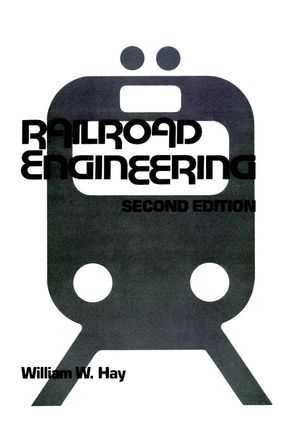Railroad Engineering, 2nd EditionISBN: 978-0-471-36400-9
Hardcover
784 pages
January 1991
 This is a Print-on-Demand title. It will be printed specifically to fill your order. Please allow an additional 10-15 days delivery time. The book is not returnable.
|
||||||
PART 1: PRINCIPLES OF LOCATION AND OPERATION.
The Railroad Industry.
The Nature of Railroad Traffic.
Revenues and Costs.
The Location Process.
Effects of Distance.
Propulsive Resistance.
Motive Power.
Electrification.
Grades and Curve Resistance.Acceleration and Deceleration.
Velocity Profiles.
Problems in Grades.
Tonnage Ratings.
Location Procedure.
PART 2. PRINCIPLES OF MAINTENANCE AND CONSTRUCTION.
Track Analysis.
Subgrade Materials.
Subgrade Design and Construction.
Subgrade Construction Costs.
Subgrade Stability Problems.
Drainage.
Ballast.
Cross Ties.
Concrete and Other Artificial Ties.
Rail.
Fastenings and Other Track Material.
Track Geometry.
Turnouts and Crossings.
Track-Train Dynamics.
Conduct of Work.
Railroad Right of Way.
Appendix A. Location Problem Example.
Appendix B. Problems for Study.
Author Index.
Subject Index.
The Railroad Industry.
The Nature of Railroad Traffic.
Revenues and Costs.
The Location Process.
Effects of Distance.
Propulsive Resistance.
Motive Power.
Electrification.
Grades and Curve Resistance.Acceleration and Deceleration.
Velocity Profiles.
Problems in Grades.
Tonnage Ratings.
Location Procedure.
PART 2. PRINCIPLES OF MAINTENANCE AND CONSTRUCTION.
Track Analysis.
Subgrade Materials.
Subgrade Design and Construction.
Subgrade Construction Costs.
Subgrade Stability Problems.
Drainage.
Ballast.
Cross Ties.
Concrete and Other Artificial Ties.
Rail.
Fastenings and Other Track Material.
Track Geometry.
Turnouts and Crossings.
Track-Train Dynamics.
Conduct of Work.
Railroad Right of Way.
Appendix A. Location Problem Example.
Appendix B. Problems for Study.
Author Index.
Subject Index.



